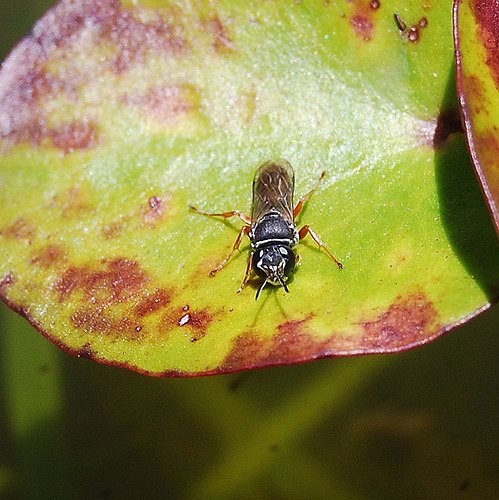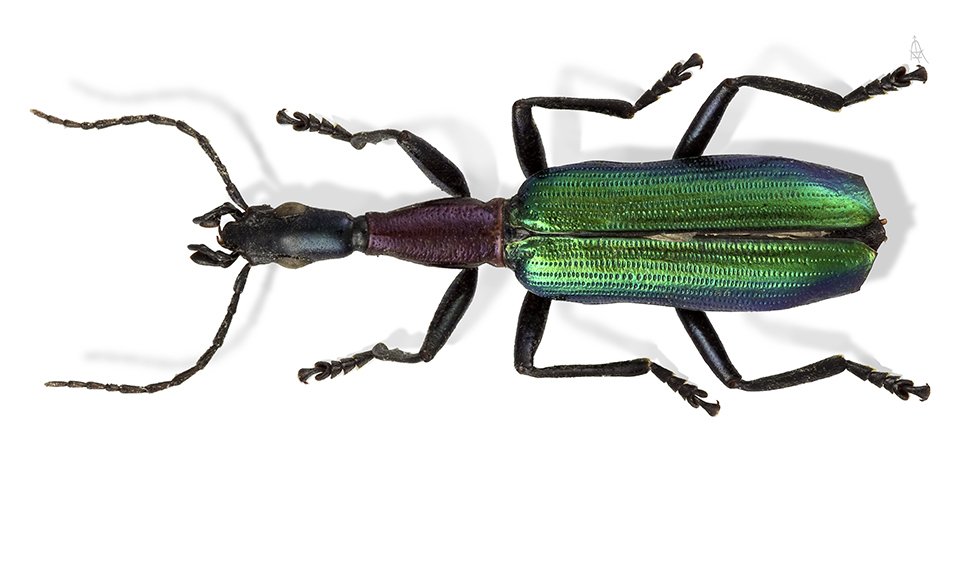Weirdest species names

Applying scientific names to species may seem like a conventional, formal process, but it can also be the chance for researchers to have a bit of fun.
While we may associate common names of animals with amusement (who came up with the ‘wombat’ or the ‘booby’ anyway?) scientific names can often be inspired by an in-joke, or an ode to personal hero – even if it’s hidden in Latin words.
And with around 15,000 new species discovered every year, there are many examples of interesting scientific names. But there are rules.
“Every proposed name needs to conform to the International Code of Zoological Nomenclature,” says Dr. Pat Hutchings, senior principal research scientist at the Australian Museum.
For example, it must only use the letters of the Latin alphabet, it must be unique, and it must be published.
Most name their species after the location where it was found or some related attribute, says Pat. But this becomes increasing difficult with so many new names added every year. So every now and then, scientists have a bit of fun naming their species.
Australian Geographic has compiled a list of the strangest and most interesting binomial (Genus species) names.
Aha
Entomologist Arnold Menke named this Australian wasp in 1977. The story goes, Menke was in a debate with another research group over the validity of the species, and when he finally provided the definitive evidence, he exclaimed, “Ah ha!”

Pharlapiscus
While not nearly as fast or famous, scientists named the newest breed of Australian sea horse Parlapiscus in honour of 20th century Australian champion racehorse Phar Lap. Unfortunately, the short, snout-nosed sea horse was recently adopted into the existing Hippocampus genus.

Pieza
Neal Evenhuis is something of a legendary comedian in the entomological community. He has used his sense of humor to name everything from Phthiria relativitae, as a pun on the theory of relativity, to Carmenelectra, after the famous model Carmen Electra. But perhaps what he’s best known for is the punny genus Pieza, which he named in 2002. This type of mythicomyiid fly must have made him hungry, because there is Pieza pi, Pieza rhea, and Pieza kake.

Ittibitium
Bittium is well known genus of small sea snails and mollusks that are found all across the globe. So what name did scientists choose when they discovered a genus of mollusks? Ittibitium.

Ba humbugi
It’s hard to imagine anyone could ever wake up on the wrong side of the bed in Fiji, but when scientists discovered this snail on the remote Pacific island, they opted to name him after the crankiest man in literature, Ebeneezer Scrooge.

Pison eu
Because we’d like to be mature, we will leave it up to you to sound this one out. Let it suffice to say that entomologist Arnold Menke must have been stung by this Central American wasp one too many times.

Gelae baen
What do you name a small, oval, shiny beetle? Well, the food it most resembles, of course. Say Gelae bean out loud and it should become immediately evident. Other species in the Galae genus include Gelae rol, Gelae fish, Gelae belae, and Galae donut.

Kamera lens
Although the first description of Kamera lens, previously known as Monas lens, is dated to 1773, little was known about this single celled organism until just a few decades ago. It was in 1991 when scientists must have thought, “Hey, we should use a camera lens to see this species better.”

Spongiforma squarepantsii
In 2010, a new species of mushroom found in Malaysia surprised scientists with its spongy appearance so much so that they couldn’t help themselves and name it after everyone’s favorite resident of Bikini Bottom.

Agra
With nearly 600 species of Amazonian beetles in the Agra genus, acclaimed entomologist Terry Erwin, who is responsible for naming of over half the genus, decided to put his punning ability to the test. There’s the intolerable Agra vation, the magical Agra cadabra, the scary Agra phobia, the abominable Agra sasquatch, or its sister species Agra yeti, and the headless Agra ichabod.

Ninjemys oweni
Richard Owen, a famous 19th century biologist, originally placed this massive Pleistocene era turtle skull in the Megalania genus. But in 1992, scientists decided this incredible fossil deserved a slightly more interesting name. The proceeding paper explained the reclassification as: ” ‘Ninj’ after ‘Ninja’, in allusion to that totally rad, fearsome foursome epitomising shelled success, and ’emys’ from the Latin for turtle.” Oweni refers to Richard Owen, so the rough translation is “Owen’s Ninja Turtle”.

Vini vidivici
The name Vini vidivici, which translates to “I came, I saw, I conquered”, is slightly ironic given that this Pacific parrot became extinct somewhere between 700-1,300 years ago. They must have forgotten the concur part.

Parastratiosphecomyia stratiosphecomyioides
Don’t worry, there’s no clever meaning that surfaces after you say this name out loud. At 42 characters, this small Indian fly has the longest scientific name of any species.



